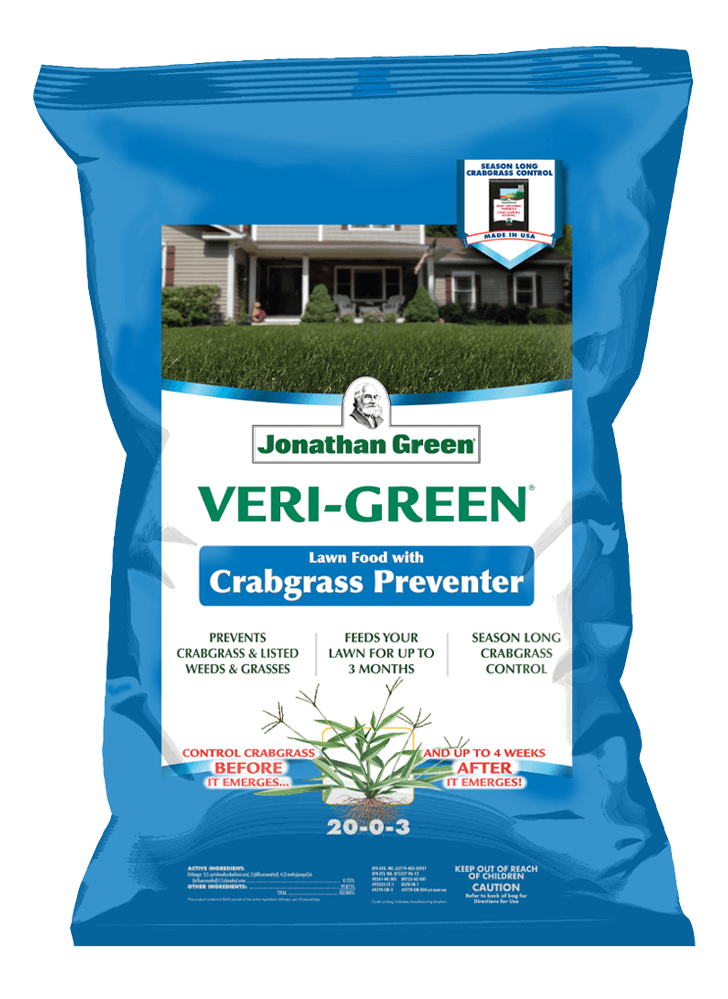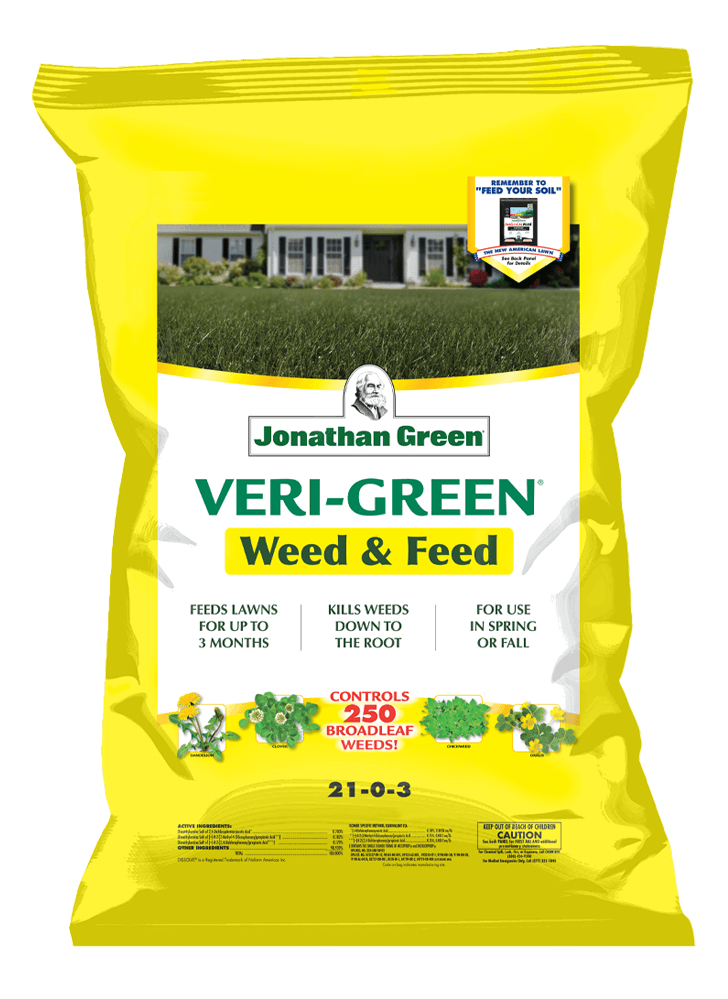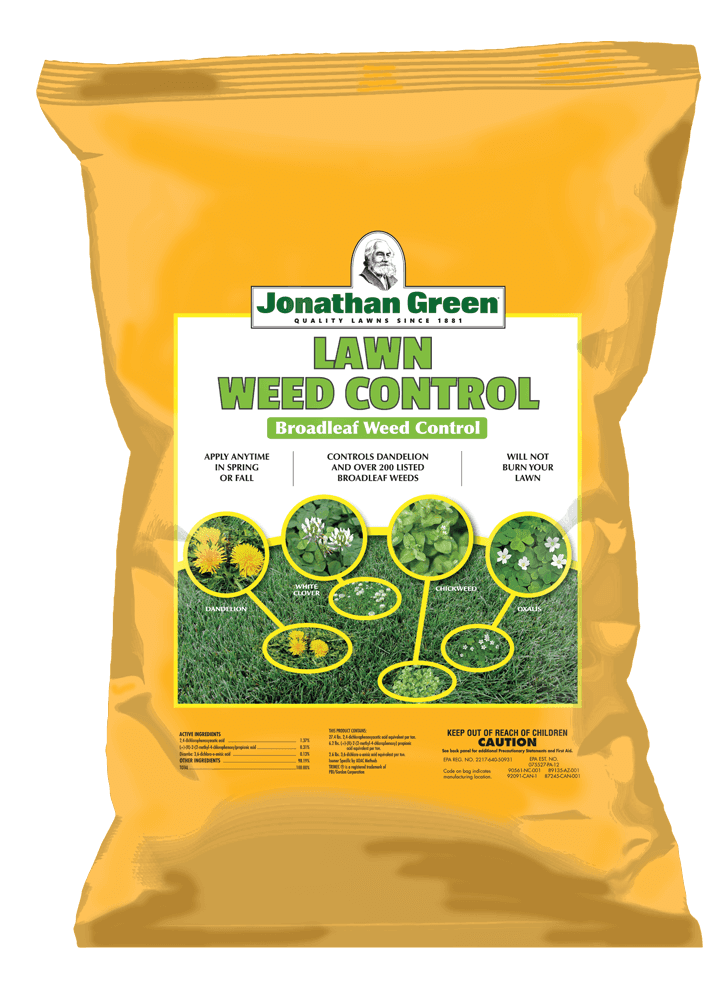How Do I Fix My Lawn Full of Weeds?
Wondering “how do I fix my lawn full of weeds?” Jonathan Green has the answers you need. When your lawn and soil are in harmony, the natural balance will ward off most weeds, insects and diseases.
Jonathan Green has specialized in beautiful lawns since 1881. Six generations of the family have worked to perfect our genetically superior grass seed and our family of lawn and soil care products. Our products will transform every aspect of your lawn to help it thrive like never before.
Where Did the Weeds Come From?
The bad news is that weed seeds can lay dormant in your soil for years. So, even if you treat the weeds you can see, there will always be more of them waiting to sprout. But what you really need to know is that weeds are not what is causing your lawn to look thin and bare. Your thin and bare lawn is just giving weeds an opportunity to sprout.
What does this mean? It means that poor soil conditions are probably to blame for your grass not filling out, for the bare spots, and for your grass just not growing. If your grass is not growing in thick, then it isn’t crowding out the weeds before they have a chance to sprout. If your lawn were healthy and your soil was correctly treated, you would not have a weed a problem.
But that doesn’t help you if you already have a weed problem. Luckily, Jonathan Green has spent decades researching just how to treat weeds to stop them for good.
Post-Emergent Herbicides
Topical (or contact) herbicides are a smart choice when you need to get rid of small, annual weeds. They kill only that part of the weed that the herbicide touches — the part above the ground (leaves and stem).
Another thing to consider when choosing a post-emergent herbicide is whether to choose a selective or non-selective product. Selective herbicides are designed to target specific types of weeds while leaving others alone. Some will kill grassy weeds, like crabgrass, while others will kill broadleaf weeds, like dandelions and chickweed.
Non-selective herbicides are more powerful, but they will usually kill everything they touch, including your grass and other desirable plants. They are best for spot applications in places where you don’t want any vegetation, such as the cracks in your sidewalk or driveway, or along a fence.
If it’s late spring and crabgrass has just begun to show up in your lawn, Jonathan Green Veri-Green Crabgrass Preventer plus Lawn Fertilizer is a good choice. It contains the newest technology with Dimension® Crabgrass Control Herbicide and controls crabgrass before it germinates as well as after germination and emergence (up to the 3-leaf stage of growth; crabgrass is a 7-leaf plant when mature). It can be applied up to four weeks later than other crabgrass preventers, usually into early June. It will feed your lawn gently for up to 8 12 weeks; however, do not seed with this product.
To rid your lawn of broadleaf weeds and dandelions that are already actively growing, apply Jonathan Green Veri-Green Weed & Feed Lawn Fertilizer in late spring or early fall. It features a 3-way weed controlling action that controls over 250 broadleaf weeds, including dandelions, chickweed, clover, wild onions, thistle, and poison ivy. It kills down to the root and feeds desirable grasses with 35% slow-release nitrogen fertilizer for up to 3 months.
Another great option is Jonathan Green Lawn Weed Control. It contains an improved three-way formula with Trimec™ that provides broadleaf weed control of more than 200 lawn weeds, including dandelion, clover, chickweed, common purslane, etc. Use it anytime of the year when weeds are actively growing .It contains no fertilizer so it can’t burn your lawn in hot weather.
Mentioned Products
Visit Jonathan Green online or find your nearest independent home and garden retailer to find out to fix your lawn full of weeds.


